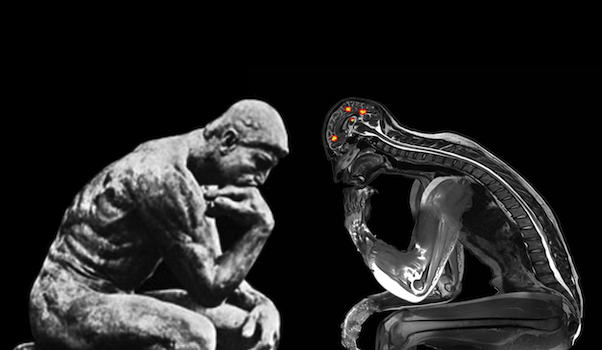Mapping miles to our minds

Digital networking advocates often speak of the “last mile” challenge, referring to the comparative ease of setting up dedicated transmission lines over the long distances between major urban centres, in contrast to the much more difficult task of breaking up those lines to bring connections into the physical separated homes of individual users.
Now an even more significant last-mile problem is emerging, as digital technologies begin to make their way not just into our dwellings, but into our brains.
“Neurotechnology is redefining what is possible in terms of monitoring and intervention in clinical and non-clinical settings, with great promise for improving mental health, well-being and productivity,” stated an OECD recommendation on this development, which was formally adopted in 2019. “Spearheaded by large national and international flagship initiatives in brain science and fuelled by a clear medical need, research both in the public and private sector has made considerable advances. In particular, the convergence between neuroscience, engineering, digitalisation, and artificial intelligence (AI) is becoming a key driver of innovation and will disrupt existing practices as well as traditional boundaries between medical therapies and consumer markets.”
Not surprisingly, this dramatic prospect has sparked warnings about the ethical, legal, and societal problems arising from these innovations. For now, those problems are mostly theoretical, but as the pace of development picks up, so too do calls for a regulatory framework ready to deal with the implications of neurotechnology.
A recent webinar mounted by the Canadian Science Policy Centre brought together a panel of keen observers in this emerging sector. None had a more vested interest in the subject than Ian Burkhart, a quadriplegic who has regained the use of his arms and hands, thanks to a neural implant restoring control over these paralyzed limbs. He is among several dozen people in the world participating in clinical trials of these brain-computer interfaces, a group he assembled to form BC Pioneers as a voice to discussions of neurotechnology.
“It was really a mission to further advocate for the possibilities of these types of devices, and the impact they can have on individuals with disabilities,” he said.
In the face of caution that might slow the pace of progress in this field, added Burkhart, he was eager to point out how dramatically these innovations could improve the lives of large numbers of people around the world.
That being said, Jennifer Chandler, a faculty member at the University of Ottawa’s Centre for Health Law, Policy and Ethics, reminded the group of the potential for harm. She specifically referred to deep brain stimulation technologies, which consist of implants designed to prevent epileptic seizures. Such devices may be combined with telemedicine, so their performance may be tracked remotely by a doctor or nurse, raising the possibility that this medical information could be intercepted on telecommunications networks.
“The brain data collected by neurotechnology could be interpreted and used in other ways — secondary purposes that might not be intended or desired, and might harm disadvantaged people,” she said. “The other concern is that values related to freedom of thought, self-determination, and privacy are at stake, if this brain data can be accessed, interpreted, and then used to draw conclusions about people.”
While her assertions may smack of science fiction, widely used methods of functional magnetic resonance imaging have successfully set up coherent language pathways in the brains of patients with “locked-in” syndrome, who otherwise have no means of using their bodies to communicate. As exciting as that breakthrough has been, it demonstrates how this same technology might be employed to “read minds”, offering an irresistible form of interrogation, open to all kinds of abuse.
The OECD recommendation includes a set of nine principles, intended to lay a foundation for the ethical use of neurotechnology. The document was distributed with a request that member countries implement these guidelines, a daunting request, according to Andrew Atkinson, a manager of emerging science policy at Health Canada.
“What’s particularly challenging about this recommendation is the breadth of potential stakeholders that falls within its scope,” he said, referring to regulators, researchers, research institutions, funding agencies, professional organizations, industry, health care providers, and patients.
He pointed to a need for up-to-date expertise, which is being addressed by a new program at Queen’s University. The Neurotech Microcredential Program, developed in collaboration with the international organization Neurotechx, offers technical training in neuroscience and the systems that are now being applied in this area.
“Ultimately, the OECD is going to come back to the member states, and they’re going to ask each one, ‘what have you done?’” Atkinson argued, suggesting the Queen’s program places Canada at the forefront of countries grappling with neurotechnology.
Graeme Moffat, a neurotechnology entrepreneur and senior fellow at University of Toronto’s Munk School of Global Affairs and Public Policy, agreed that Canadian academic work has given this country an early lead in the sector. But despite the launch of products such as the Muse, a brain-sensing headset created by Toronto-based InteraXon, commercial progress has been less impressive.
“In general, Canada unfortunately has not seen the industry growth that we’re now seeing in the USA and in Asia,” he said. “Most of the growth now in the neurotechnology industrial sector is occurring outside of Canada.”
Moffat insisted that Canada must move more aggressively, not only to secure a place in what promises to be a burgeoning medical marketplace, but to retain control over the direction of scientific research.
“As the industry develops abroad and not at home, we face the additional risk that whatever regulations or recommendations we develop, will have an arguably smaller influence if we don’t succeed in nurturing home-grown innovation in neurotechnology here in Canada and in scaling it to market internationally.”
R$
| Organizations: | |
| People: | |
| Topics: |
Events For Leaders in
Science, Tech, Innovation, and Policy
Discuss and learn from those in the know at our virtual and in-person events.
See Upcoming Events
You have 0 free articles remaining.
Don't miss out - start your free trial today.
Start your FREE trial Already a member? Log in
By using this website, you agree to our use of cookies. We use cookies to provide you with a great experience and to help our website run effectively in accordance with our Privacy Policy and Terms of Service.





